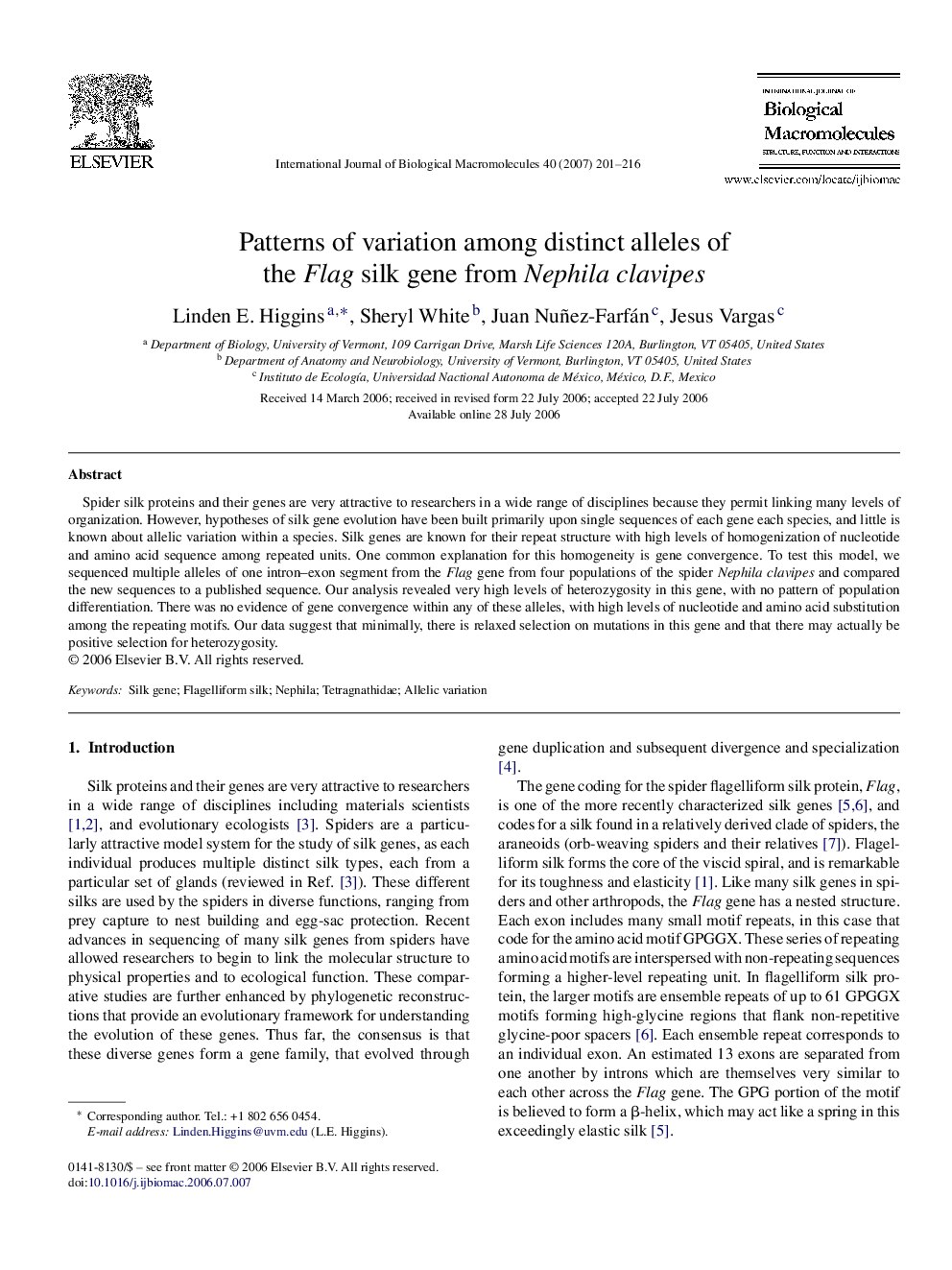| Article ID | Journal | Published Year | Pages | File Type |
|---|---|---|---|---|
| 1988291 | International Journal of Biological Macromolecules | 2007 | 16 Pages |
Abstract
Spider silk proteins and their genes are very attractive to researchers in a wide range of disciplines because they permit linking many levels of organization. However, hypotheses of silk gene evolution have been built primarily upon single sequences of each gene each species, and little is known about allelic variation within a species. Silk genes are known for their repeat structure with high levels of homogenization of nucleotide and amino acid sequence among repeated units. One common explanation for this homogeneity is gene convergence. To test this model, we sequenced multiple alleles of one intron-exon segment from the Flag gene from four populations of the spider Nephila clavipes and compared the new sequences to a published sequence. Our analysis revealed very high levels of heterozygosity in this gene, with no pattern of population differentiation. There was no evidence of gene convergence within any of these alleles, with high levels of nucleotide and amino acid substitution among the repeating motifs. Our data suggest that minimally, there is relaxed selection on mutations in this gene and that there may actually be positive selection for heterozygosity.
Related Topics
Life Sciences
Biochemistry, Genetics and Molecular Biology
Biochemistry
Authors
Linden E. Higgins, Sheryl White, Juan Nuñez-Farfán, Jesus Vargas,
